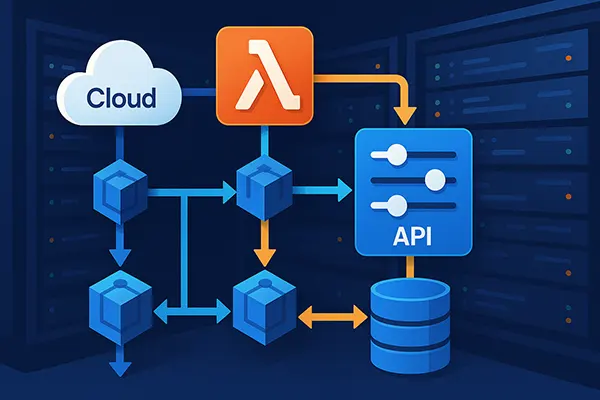Data Protection in the Cloud: Standards and Encryption Used by Leading Services

Cloud storage and computing have become an essential part of both business operations and personal digital life. With the exponential growth of sensitive data stored online, ensuring its protection has never been more crucial. Leading services such as Google Cloud, Amazon Web Services (AWS), and Microsoft Azure have adopted rigorous security standards and advanced encryption methods to safeguard user information. Understanding these measures provides clarity on how data remains protected in 2025.
International Standards for Cloud Security
Modern cloud services operate under internationally recognised frameworks that set the foundation for data protection. Certifications such as ISO/IEC 27001 and ISO/IEC 27701 ensure that providers implement structured approaches to managing information security and privacy. These standards confirm that data is handled with strict controls, regular audits, and compliance with global security norms.
In addition to ISO certifications, providers also adhere to the Cloud Security Alliance (CSA) guidelines. The CSA offers detailed protocols for data governance, incident response, and risk management. Such frameworks are widely adopted to harmonise practices across different jurisdictions, reducing risks associated with fragmented security policies.
Another significant standard in 2025 is SOC 2 Type II, which evaluates the effectiveness of security systems over a defined period. For clients, this certification is a guarantee that service providers consistently apply strong security controls rather than merely having them in theory.
Compliance with Regional Regulations
Beyond international certifications, cloud services must comply with regional data protection laws. The European Union’s General Data Protection Regulation (GDPR) continues to be one of the strictest frameworks, obligating providers to ensure data minimisation, user consent management, and strong breach notification procedures. Non-compliance can lead to significant financial penalties.
In the United States, frameworks such as HIPAA for healthcare and CCPA for consumer privacy set additional benchmarks. These requirements push providers to develop flexible solutions capable of meeting diverse industry standards simultaneously. The result is a layered approach to compliance that adapts to different regions and sectors.
By 2025, many providers have adopted automated compliance monitoring tools. These systems continuously check adherence to legal obligations, ensuring real-time reporting and faster responses to potential risks. This proactive stance minimises exposure to regulatory breaches and enhances trust among users.
Encryption as the Cornerstone of Data Protection
Encryption remains a critical element in defending against unauthorised access. Leading providers utilise AES-256 encryption for data at rest, which is widely regarded as the industry benchmark for strong protection. This ensures that even if a storage medium is compromised, the information remains unreadable without the correct keys.
For data in transit, TLS 1.3 has become the default standard across most cloud environments. This protocol provides enhanced security against interception by encrypting data packets during transmission. The adoption of TLS 1.3 also reduces latency, balancing protection with performance efficiency.
Key management has evolved significantly. Providers now offer customer-managed encryption keys (CMEK), giving organisations direct control over their cryptographic material. This approach allows enterprises to maintain sovereignty over their data, which is particularly important for industries dealing with highly sensitive information.
Zero-Trust Architecture and Data Security
One of the most significant developments in cloud security is the adoption of zero-trust models. Instead of assuming internal networks are secure, zero-trust verifies every access request regardless of its origin. This ensures that only authenticated and authorised users or devices can interact with data.
Multi-factor authentication (MFA) plays a crucial role within zero-trust frameworks. Users are required to provide multiple forms of verification, such as biometrics or hardware tokens, which reduces the risk of credential theft. Providers integrate these tools seamlessly with cloud services, making them a default requirement for enterprise accounts.
Micro-segmentation further strengthens zero-trust. By dividing networks into smaller sections, providers restrict lateral movement in case of a breach. This containment strategy ensures that even if attackers gain access to one area, they cannot exploit the rest of the environment.

Future Trends in Cloud Data Protection
As cyber threats evolve, cloud providers continue to innovate in security practices. Artificial intelligence (AI) and machine learning (ML) are increasingly used to detect anomalies in real time. These technologies allow proactive identification of unusual patterns, reducing the time to respond to potential attacks.
Post-quantum encryption is another area gaining momentum. With quantum computing expected to challenge traditional encryption, providers are investing in algorithms resistant to quantum-based attacks. By 2025, pilot projects integrating post-quantum cryptography into cloud systems are already underway.
Furthermore, confidential computing is becoming more accessible. This method encrypts data even during processing, ensuring information remains protected not just when stored or transmitted, but also while being actively used. Major providers now offer confidential virtual machines and containers, which address some of the most persistent vulnerabilities in cloud computing.
Building User Confidence in Cloud Security
User trust remains central to the success of cloud adoption. Transparency reports published by providers detail how often government agencies request access to data and how such requests are handled. These reports provide clarity and reinforce the providers’ commitment to privacy.
Education also plays a role. Providers increasingly invest in training materials and security awareness programmes for their customers. Helping organisations understand their shared responsibility in the cloud strengthens overall resilience against cyber threats.
Finally, collaboration between governments, private companies, and international organisations ensures continuous improvement of security standards. By maintaining open dialogue, the industry is better positioned to anticipate future challenges and create unified strategies for protecting digital assets.
Popular topics
-
 High-Performance Networking...
High-Performance Networking...High-performance networking has become a core requirement for modern …
-
 Edge AI and TinyML: How Int...
Edge AI and TinyML: How Int...Edge-level artificial intelligence has become one of the most …
-
 How to Programmatically Bui...
How to Programmatically Bui...Creating a flexible and efficient microservices ecosystem in 2025 …
-
 The Role of Artificial Inte...
The Role of Artificial Inte...Artificial intelligence has become a practical component of gambling …
-
 Virtual and real hosting, w...
Virtual and real hosting, w...Today, many providers offer virtual servers where you can …
